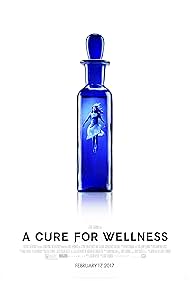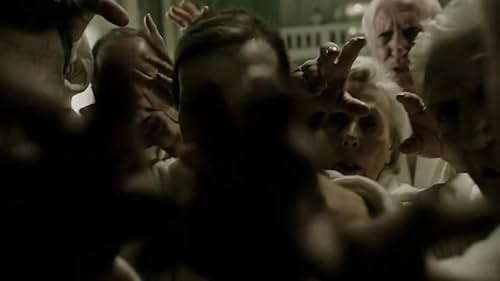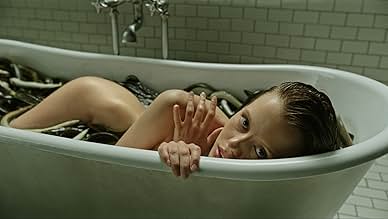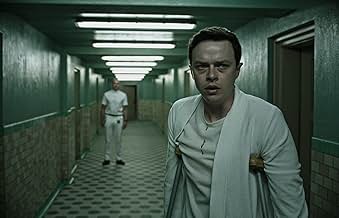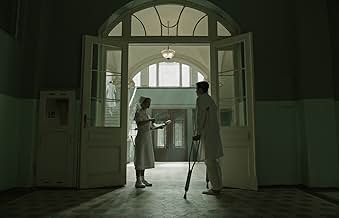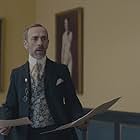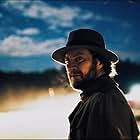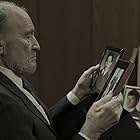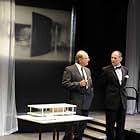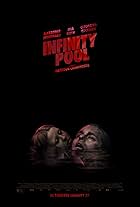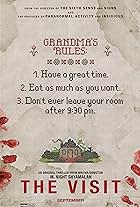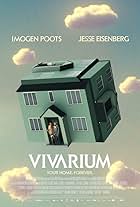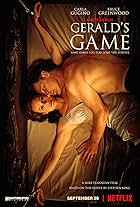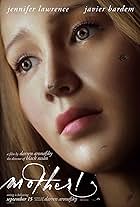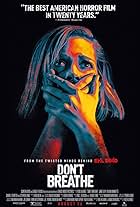An ambitious young executive is sent to retrieve his company's CEO from an idyllic but mysterious "wellness center" at a remote location in the Swiss Alps, but soon suspects that the spa's t... Read allAn ambitious young executive is sent to retrieve his company's CEO from an idyllic but mysterious "wellness center" at a remote location in the Swiss Alps, but soon suspects that the spa's treatments are not what they seem.An ambitious young executive is sent to retrieve his company's CEO from an idyllic but mysterious "wellness center" at a remote location in the Swiss Alps, but soon suspects that the spa's treatments are not what they seem.
- Awards
- 4 wins & 5 nominations
Storyline
Did you know
- TriviaThe building of the sanatorium is part of a former hospital complex. During WWI many injured soldiers stayed there, including Adolf Hitler.
- GoofsEven though the film was shot in Germany, the English-speaking production team apparently used Google Translate and didn't know compound nouns are written as one word in German. Consequently, the words on the signs leading to various wings should not be split up, e.g. "Transfusionsflügel", not "Transfusions Flügel".
- Crazy creditsThe 20th Century Fox fanfare is silent and the logo fades out early.
- SoundtracksDanny's Song
Written by Kenny Loggins
Performed by Pat Valentino & His Orchestra
Courtesy of Surrey House Music
Featured review
"A Cure for Wellness" follows an ambitious, young New York financial executive who is sent to Switzerland to retrieve a colleague who has indefinitely extended his stay at a mountaintop sanitorium known for its therapeutic mineral waters. Hiding behind the veneer of medicine, however, is something far darker.
Though it's taken a critical beating, "A Cure for Wellness" is a bit of an underdog in my book. It's a big-budget picture backed by a major studio that is a financially dangerous mix of genres, references, and ideas. It's, in a word, ambitious—and a gamble on just about all fronts. The result is phenomenal in many regards, less so in others, but given the current climate of the horror film, this movie offers a lot of things that you simply do not see much of in genre films (or just films in general, for that matter) anymore.
One could list the aesthetic references for days, though director Gore Verbinski seems to be heavily influenced by Alfred Hitchcock in compositions, David Cronenberg in theme, and Mario Bava in both—and that's probably just the tip of the iceberg. In any case, the film is visually sumptuous, and honestly one of the best-photographed films I've seen in perhaps years. Stunning compositions of the castle yard and the surrounding Swiss Alps need to be seen to be believed, while the vintage hospital interiors are equally stunning and atmospheric for different (and more sinister) reasons. While the first twenty minutes of the film are wildly contemporary, everything that follows seems to be framed within a pre-World War II vacuum.
Needless to say, the film is visually incredible and saturated in a Euro-Gothic atmosphere that to me seemed quite reminiscent of Bava (think "Kill, Baby... Kill!" stretched to big-budget parameters). In terms of narrative, the film is borderline mythical, weaving an entire history of the sanitorium that, though contrived, is enough to pique the interest of any self-respecting genre fan. The main problem here is that the unfurling of that history and its relationship to what is happening at the sanitorium is not only semi-predictable, but it begins to drag its feet a bit in the last act of the film, coming to a conclusion that, though appropriate, feels slightly pedestrian. I don't want to say the film devolves, but it certainly does cross the threshold from "genuinely unique amalgam" to "semi-predictable psychological thriller" somewhere in the third act.
In spite of this, however, the film is undeniably fun, and remains engrossing from start to finish; though the two and a half-hour run time could have been trimmed a bit, the film never felt tedious to me, probably because of how skillfully it was able to invent and then wallow in its own world. Solid performances also help; Dane DeHaan convincingly plays the young and assertive financier, while Mia Goth is an ethereal and guileless patient whom he befriends (and who plays a key part in what is to come). Jason Isaacs is also sinister as the cool, self-possessed leader of the hospital.
While "A Cure for Wellness" certainly deserves some hits for taking a few predictable narrative routes, I am still somewhat surprised that it's gotten the negative feedback it has from critics. I think genre fans will genuinely appreciate it—ranging from sci-fi fans to through-and-through horror cinephiles like myself—because it uses its references smartly and evokes an atmosphere that is truly overpowering. There is enough heady Gothic atmosphere, body horror, and psychological paranoia to keep everybody engaged. Even when it's predictable and even when its own mythos registers too absurd, I can't bring myself to knock it because there is so much it gets right—but I suppose my greater point is that, even when it doesn't get it right, you never feel compelled to look away. 8/10.
Though it's taken a critical beating, "A Cure for Wellness" is a bit of an underdog in my book. It's a big-budget picture backed by a major studio that is a financially dangerous mix of genres, references, and ideas. It's, in a word, ambitious—and a gamble on just about all fronts. The result is phenomenal in many regards, less so in others, but given the current climate of the horror film, this movie offers a lot of things that you simply do not see much of in genre films (or just films in general, for that matter) anymore.
One could list the aesthetic references for days, though director Gore Verbinski seems to be heavily influenced by Alfred Hitchcock in compositions, David Cronenberg in theme, and Mario Bava in both—and that's probably just the tip of the iceberg. In any case, the film is visually sumptuous, and honestly one of the best-photographed films I've seen in perhaps years. Stunning compositions of the castle yard and the surrounding Swiss Alps need to be seen to be believed, while the vintage hospital interiors are equally stunning and atmospheric for different (and more sinister) reasons. While the first twenty minutes of the film are wildly contemporary, everything that follows seems to be framed within a pre-World War II vacuum.
Needless to say, the film is visually incredible and saturated in a Euro-Gothic atmosphere that to me seemed quite reminiscent of Bava (think "Kill, Baby... Kill!" stretched to big-budget parameters). In terms of narrative, the film is borderline mythical, weaving an entire history of the sanitorium that, though contrived, is enough to pique the interest of any self-respecting genre fan. The main problem here is that the unfurling of that history and its relationship to what is happening at the sanitorium is not only semi-predictable, but it begins to drag its feet a bit in the last act of the film, coming to a conclusion that, though appropriate, feels slightly pedestrian. I don't want to say the film devolves, but it certainly does cross the threshold from "genuinely unique amalgam" to "semi-predictable psychological thriller" somewhere in the third act.
In spite of this, however, the film is undeniably fun, and remains engrossing from start to finish; though the two and a half-hour run time could have been trimmed a bit, the film never felt tedious to me, probably because of how skillfully it was able to invent and then wallow in its own world. Solid performances also help; Dane DeHaan convincingly plays the young and assertive financier, while Mia Goth is an ethereal and guileless patient whom he befriends (and who plays a key part in what is to come). Jason Isaacs is also sinister as the cool, self-possessed leader of the hospital.
While "A Cure for Wellness" certainly deserves some hits for taking a few predictable narrative routes, I am still somewhat surprised that it's gotten the negative feedback it has from critics. I think genre fans will genuinely appreciate it—ranging from sci-fi fans to through-and-through horror cinephiles like myself—because it uses its references smartly and evokes an atmosphere that is truly overpowering. There is enough heady Gothic atmosphere, body horror, and psychological paranoia to keep everybody engaged. Even when it's predictable and even when its own mythos registers too absurd, I can't bring myself to knock it because there is so much it gets right—but I suppose my greater point is that, even when it doesn't get it right, you never feel compelled to look away. 8/10.
- drownsoda90
- Feb 20, 2017
- Permalink
- How long is A Cure for Wellness?Powered by Alexa
Details
- Release date
- Countries of origin
- Official sites
- Languages
- Also known as
- La cura siniestra
- Filming locations
- Production companies
- See more company credits at IMDbPro
Box office
- Budget
- $40,000,000 (estimated)
- Gross US & Canada
- $8,106,986
- Opening weekend US & Canada
- $4,356,941
- Feb 19, 2017
- Gross worldwide
- $26,620,002
- Runtime2 hours 26 minutes
- Color
Contribute to this page
Suggest an edit or add missing content

